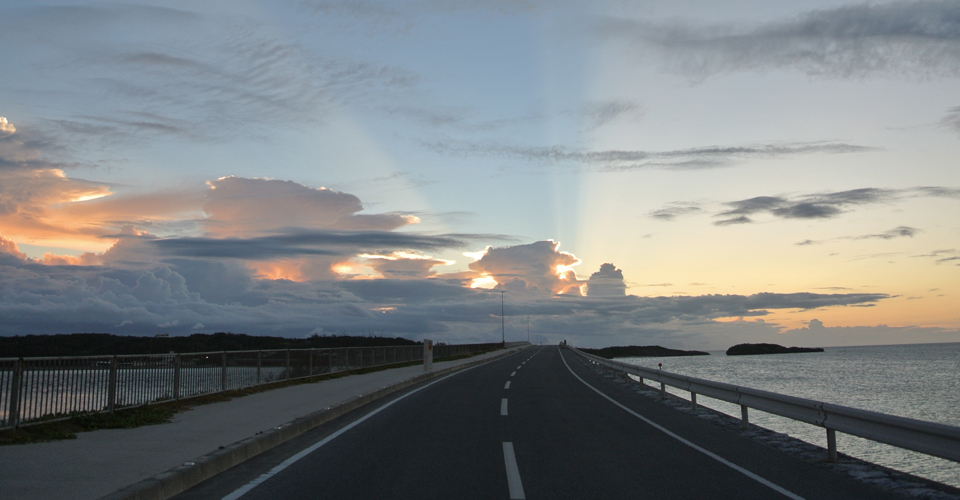P29-P32
Noho
The Noho Ohashi Bridge joins Iheya and Noho Hamlet, which is the area’s second-oldest hamlet and is known for its unique scenery and culture.


Gradational colored layers of deep blue and light


Noho Ohashi Bridge
The bridge between Iheya and Noho Island. The first bridge was opened in 1979, and the current second bridge was opened in 2004. The color of the water and the state of the sea appear different from either side of the bridge. With luck, visitors might catch sight of a sea turtle. Lots of people fish from the bridge.
Children practicing the stick-fighting performance at Noho community center
The fine sight of beautiful vividly colored bougainvillea 


Noho Port
The gateway to the neighboring Izena Island, which is a 15-minute boat ride away. Enjoy fine views of the islands.
Maeda Ferry
Iheya (Noho port) - Izena (Uchihana port)
| Single Fare / Passenger | |
| 5,000 yen / pax | |
| 6,000 yen / 2-4 pax | |
| 7,000 yen / 5-6 pax | |
| 1,000 yen / pax (group of 7 or more) |
Contact
Maeda Ferry
Tel: 090-7585-5572
※The fares are subject to change. For more information, please inquire.
※The ferry ride takes around 15 minutes depending on the weather.
※Bookings can be made up to a month in advance.
※Same-day bookings must be made at least an hour in advance.
※Departure times can be tailored to passenger needs.
※An environmental tax of 100 yen is payable.

Juma
This uninhabited island off the Juma coast is also known as Frying-pan Island because of its shape. There is a gama (cave) here in which fifi are believed to have lived. Visitors can walk to the island, but should make sure there is a way back in shallow water at high tide.
Fifi: goblins similar to the kijimuna sprites of mainland Okinawa. These are mythical creatures, like fairies.
 Imono Kami
Imono Kami
Noho Island is unsuited to rice cultivation due to a lack of water. Potatoes became the staple food, and are now enshrined there. 

Noho stone walls and quarry
Square-cut rocks are stacked to make walls. This type of stonework is generally rare, but is commonly seen on Noho Island. There used to be a quarry on the island, and rock was excavated there to build walls. This rock is full of holes, and is known locally as awaishi (lit. “sea foam stone”)
<P27~P28
P33~P34>
